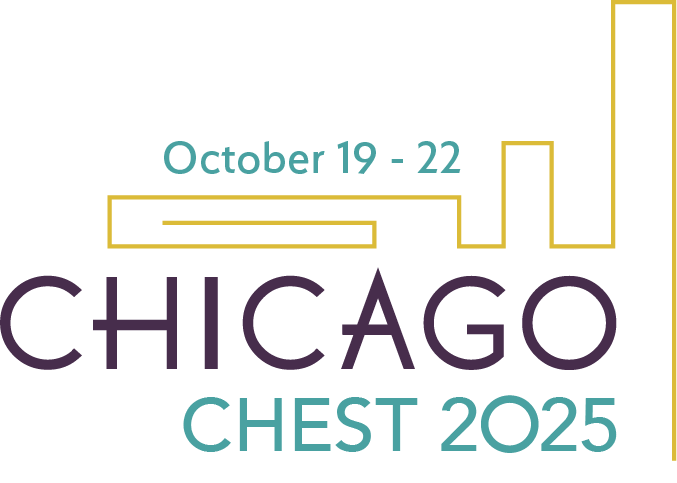
Asthma continues to be a significant public health challenge in the United States. Despite years of creating awareness and addressing racial disparities, there remains a divide between minority groups and better outcomes in asthma care.
According to data from the 2022 National Health Interview Survey, asthma disproportionately affects certain racial and ethnic groups in the United States. African Americans (10.6 ± 0.41%), American Indian/Alaskan Natives (12.5 ± 1.08%), and Puerto Ricans (9.6 ± 0.87%) experience significantly higher asthma prevalence compared with White Americans (7.8 ± 0.15%). Asthma-related mortality among African Americans (24.4 ± 0.76 per million) is more than double that of White Americans (9.8 ± 0.22 per million), highlighting stark disparities in health outcomes.1–4
Besides being a serious public health concern, there is a significant economic burden associated with costs arising in settings of these disparities. Achieving equitable asthma care requires looking beyond the inflammatory pathways of asthma and addressing the biological, sociocultural, behavioral, and environmental challenges.

While discussing the racial disparities in asthma, it is essential to unpack the multifaceted determinants of these gaps in care. Rooted in socioeconomic inequality and the enduring legacy of racism, we notice that this is a deeply convoluted topic to unfold. Historically, policies such as redlining created racially and economically segregated neighborhoods.5 This allowed for the isolation of concentrated poverty, lower education levels, and reduced access to resources.
Emergency department visits for asthma are reported to be 2.4 times higher in historically redlined areas than in less-redlined areas. This disparity exists even after adjusting for poverty, diesel exhaust, and particulate matter pollution, with residents of redlined areas still facing an almost 40% greater risk of asthma-related emergency room visits.6 Inadequate ventilation, cracks in walls, leaky pipes, cockroach infestations, dust mites, lack of climate control, and mold and mildew infestations are all risk factors for increased hospitalizations and emergency room visits.
Racial disparities

Despite socioeconomic status being a primary driver of disparity, it is not the sole driver. There are additional factors to consider. The Hispanic Paradox refers to the puzzling observation that Hispanic individuals in the United States tend to have health outcomes that are as good as, or even better than, those of non-Hispanic White individuals, despite facing significant socioeconomic disadvantages (such as lower income, poorer education, and obstructed health care access).7 Several studies have reported a lower overall prevalence of asthma among Hispanic individuals in the United States compared with the general population and non-Hispanic White demographic. There are some potential explanations for these findings, such as the “healthy immigrant effect” (where individuals who are healthier in a population are more likely to migrate), cultural factors, strong social networks, underdiagnosing, and return migration (individuals who are sick returning to their home countries).
However, it has also been shown that this paradox does not fit everyone in this category. While Mexican Americans might exhibit a health advantage, Puerto Ricans in the US mainland consistently show a much higher prevalence of and morbidity and mortality from asthma compared with other Hispanic and non-Hispanic White groups. Also, non-Puerto Rican Hispanic individuals in the United States are less likely to be insured when compared with White Americans.3 Other factors, such as cultural and language barriers, may also contribute to inequitable medical care.
Population studies have revealed notable disparities among different patient groups. A smaller proportion of Black patients were employed full-time and had commercial insurance without the need for a primary care referral compared with other groups. Biologic treatments were also less commonly used among Black patients than among non-Hispanic White patients. Additionally, Hispanic patients exhibited lower median FEV1 % predicted and higher median blood eosinophil counts compared with other populations. Both Black and Hispanic patients experienced significantly higher annualized asthma exacerbation rates, with emergency department visits due to exacerbations being more frequent among Black patients (18%) than non-Hispanic White patients (12%).4
But it’s important to remember that behind the statistics are real people, with families navigating a disease that is shaped by not only biology but also history, policy, environment, and the quality of care that they can access.
Psychological barriers
Living in environments marked by racism, violence, and discrimination also takes a hidden but powerful toll on the body.5 Systemic racism and discrimination, as structural factors, contribute to both individual and community-level stress, thereby worsening disparities in asthma and allergic diseases. Experiencing this level of stress can significantly dysregulate the immune system and impact the response to aeroallergens. This can increase pulmonary inflammation and alter the effectiveness of allergen-specific treatments and diagnostic tools. Elevated cortisol levels, a consequence of stress, can promote a T-helper type 2 immune response, leading to increased IgE production, which we know is a primary driver of asthma control. What might look like poor medication adherence or uncontrolled asthma on paper may, in fact, be a body in survival mode, constantly responding to environmental and emotional triggers.
On top of this, mistrust in the health care system—built on generations of discrimination—continues to shape how people seek and receive care. Parents of African American children have frequently reported higher levels of dissatisfaction with the health care system, which ultimately has led to less frequent clinic visits and more emergency room visits and hospitalizations. It has also been shown that medical providers who treat minority groups are less likely to adhere to guidelines and often underdiagnose asthma severity. This is compounded by less adherence to medication due to transportation and financial limitations. So it’s no surprise that treatment plans are frequently interrupted or abandoned altogether.
Financial roadblocks
This leads us to explore the realm of financial barriers to care and medications. The implementation of single maintenance and rescue therapy (SMART) and anti-inflammatory rescue (AIR) has led to a paradigm shift in asthma care.8 This has led to fewer severe exacerbations, less oral corticosteroid use, fewer emergency room visits, and a significantly improved Asthma Control Questionnaire score.
Having said this, many patients who are underserved still have limited access to SMART or AIR due to multiple barriers. These include limited insurance coverage when prescribed both rescue and maintenance therapy, higher out-of-pocket or copay costs, and the fact that medical providers serving these communities are less likely to be updated with the current guidelines.9 There is an urgent need for policy change among insurance companies to provide better coverage for inhaled corticosteroids (ICS)-formoterol to be used as SMART and ICS-albuterol to be used as AIR, currently a barrier despite the proven efficacy in reducing asthma exacerbations.
Inaccessible treatments
Among the treatment options for asthma, specifically severe asthma, we have seen a growing popularity and use for biologics designed to target inflammatory pathways in asthma. Unfortunately, many underserved populations have limited access to these treatments due to many factors.10 Higher-income areas have been shown to be more likely to be prescribed biologic therapies and are more compliant. This may be due to the fact that these therapies require specialist oversight, and wealthier geographic locations have better access to these providers.
Another key factor that has the potential to impact access to biologics is that all these therapies are subject to medical review and reauthorization, required every six to 12 months. Prior authorizations and peer review requests significantly impact physicians, which may limit the prescription rates of these therapies in sectors where staffing is reduced.
Looking beyond inflamed airways
While shedding light on all these barriers, we have an opportunity to translate knowledge into action. Many interventions were shown to be effective in improving care and outcomes in these specific situations. Community health programs, mobile clinics, and asthma education programs can effectively increase literacy, provide resources to underserved areas, and eliminate transportation as a barrier to receiving adequate care. School programs, home care and assisted living visits, exercise and gym memberships, and care coordination teams are all effective strategies for closing this gap in health care discrepancy.
Health care remains significantly divided between different socioeconomic, racial, and ethnic backgrounds. It is essential to address these social determinants of health and to advocate for policy and systemic change. Leveraging newer technologies to maintain education throughout the medical community with virtual courses and remote asthma guideline adherence will be another step forward in assuring that providers remain up to date on current practices.
We must reaffirm that the disparities in asthma care are not solely biologic but also embedded deep in the roots of our political, social, and health care systems.
The vision must be clear: a future where every individual, regardless of race, income, or ZIP code, has access to timely, effective, and compassionate asthma care. This is not just a goal—it is a moral imperative.
This article was originally published in the Fall 2025 issue of CHEST Physician.
References
1. CDC. Asthma: Most Recent National Asthma Data. US Department of Health and Human Services, CDC. 2021. https://www. cdc.gov/asthma/most_recent_national_asthma_data.htm
2. Rose D, Mannino DM, Leaderer BP. Asthma prevalence among US adults, 1998-2000: role of Puerto Rican ethnicity and behavioral and geographic factors. Am J Public Health. 2006;96(5):880-888. doi:10.2105/AJPH.2004.050039
3. Hunninghake GM, Weiss ST, Celedón JC. Asthma in Hispanics. Am J Respir Crit Care Med. 2005;173(2):143-163. doi: 10.1164/rccm.200508-1232so
4. Lugogo N, Judson E, Haight E, et al. Severe asthma exacerbation rates are increased among female, Black, Hispanic, and younger adult patients: results from the US CHRONICLE study. J Asthma. 2022;59(12):2495-2508. doi:10.1080/02770903.2021.2018701
5. Burbank AJ, Hernandez ML, Jefferson A, et al. Environmental justice and allergic disease: a work group report of the AAAAI Environmental Exposure and Respiratory Health Committee and the Diversity, Equity, and Inclusion Committee. J Allergy Clin Immunol. 2022;151(3):656-670. doi: 10.1016/j.jaci.2022.11.025
6. Cook Q, Argenio K, Lovinsky-Desir S. The impact of environmental injustice and social determinants of health on the role of air pollution in asthma and allergic disease in the United States. J Allergy Clin Immunol. 2021;148(5):1089-1101.e5. doi: 10.1016/j.jaci.2021.09.018
7. Marquez-Velarde G. The paradox does not fit all: racial disparities in asthma among Mexican Americans in the U.S. PLoS One. 2020;15(11):e0242855. doi: 10.1371/journal.pone.0242855
8. Imam SF, Zafar S, Oppenheimer JJ. Single maintenance and reliever therapy in treatment of asthma exacerbations. Ann Allergy Asthma Immunol. 2022;129(6):703-708. doi: 10.1016/j.anai.2022.07.024
9. Nanda A, Siles R, Park H, et al. Ensuring equitable access to guideline-based asthma care across the lifespan: tips and future directions to the successful implementation of the new NAEPP 2020 guidelines, a Work Group Report of the AAAAI Asthma, Cough, Diagnosis, and Treatment Committee. J Allergy Clin Immunol. 2023;151(4):869-880. doi: 10.1016/j.jaci.2023.01.017
10. Inselman JW, Jeffery MM, Maddux JT, Shah ND, Rank MA. Trends and disparities in asthma biologic use in the United States. J Allergy Clin Immunol Pract. 2021;8(2):549-554.e1. doi: 10.1016/j.jaip.2019.08.024
